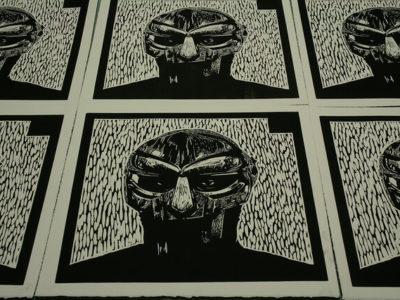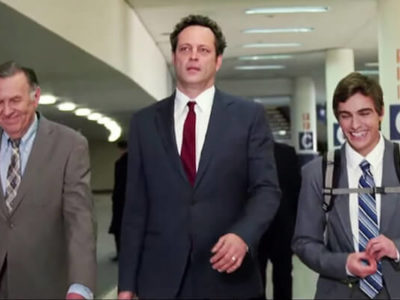Some of the most recognizable artistic images in history came from printmakers. The Barack Obama “HOPE” poster. The Great Wave off Kanagawa. Andy Warhol’s Marilyn Diptych.
Though the process doesn’t get the same public admiration as a medium like painting or sculpting, it obviously holds a vital place in art history. If the expression of your creativity is best rendered through transferring duplicable images, the printmaking major might be for you. One day, you could even be the next Warhol.
Here’s what you should know about the printmaking major.
What you’ll be doing
The nuances of this major include techniques and procedures. Different schools will emphasize different techniques in their printmaking studies. You’ll likely learn about serigraphy, one of the oldest forms of printmaking in which the artist forces ink through a fine screen on to the partially covered surface beneath it. Lithography, intaglio, woodcut, block, stencil, relief, etching, composite: Any of these procedures could be taught in a class or unit at whatever institution you choose. You’ll learn to experiment and work with these many techniques to express your ideas. You could even learn adjacent yet useful skills alongside printmaking, such as book making, photo printmaking, and other media combinations.
Some things you’ll end up learning outside of class. Prepare to get your hands dirty by sketching, carving, painting and transferring to sharpen your skills. And like with many hands on major, be ready to spend lots on supplies. It helps to learn about the products worth your money. “Most solvents, tapes and brushes and even wood plates can be purchased at a DIY store at a fraction of a cost. One thing I would never compromise on is good printmaking paper. One develops a bit of a fetish for paper on this course. And tools! You must have good tools. But don’t rush into buying supplies that you are not sure you are going to need or use very much. Wait for your style and your direction to develop before making a huge investment,” artist-printmaker, owner of Hoopoe Print Studio and University of Brighton alumni, Ana Manzon said.
You can also consider combing printmaking with another art medium program, like painting or illustration, to further curate your own style. Or, you could consider combining your printmaking studies with a major like business, production or education to truly broaden the horizons of your career prospects.
Classes You’ll Take
The beginning of your journey through printmaking academia will depend on the institution you choose to enroll in. For your first year, most art schools will require you to complete foundational classes to give you some foundational skills to build upon for your following semesters. This usually includes classes in art history, language, drawing, and newer media skills. After that, you can go into more procedural classes like Intermediate or Advanced Relief, where you’ll gain more hands-on experience in drawing, cutting, and printing techniques, as well as more work for your portfolio. You’ll likely take essentials like a Monoprinting class, where you’ll learn to transfer prints to matrixes like metal, wood, stone, and glass. “A class that I took that effected my artist style the most was evening life drawing classes that I took for 3 months at the Glasgow School of Art. It was at these classes that I fell in love with drawing drawing the human body as well as gaining the skills to do it in a visually impactful way. These classes introduced me to new drawing techniques that I still use in my daily drawings.” Freya Roberts, a third year Contemporary Art Practice major at City of Glasgow College.
Some art schools, like the Pennsylvania Academy of Fine Arts, require printmaking majors to take some sort of technology focused class, like Photography or Digital Imaging. With principles taught in these classes like camera operation or 3D modeling tool skills, you can manipulate your art into a truly individual production. “Historical and critical studies module had a major influence on my work. I know it, perhaps, sounds surprising but the opportunity to read art theory and philosophy and, more importantly, write about it had a profound effect on my ability to develop work and, more importantly, talk about it.” Ana Manzon said.
Other classes are available for fun and experience. The Maryland Institute College of Art offers a class called “Searching for Utopia: Road Movies and Travelogues,” a course focusing on cinematic depictions of western expansion and road trips. This class comes with a $250 course fee for the expenses of the road trip that students are required to embark on. The entire experience will end up culminating as a film festival/gallery opening where work produced as a result of this project will be publicly displayed.
Internships
Practice doesn’t always make perfect, but it certainly makes you better at your craft. It’s vital in any creative field, and you can gain printmaking/art production practice at galleries, studios, educational institutions and more if you want to branch out from freelancing while still in school.
Right now, in many major U.S. cities, internships for art students exist. You can work as an intern for NPR’s Arts, Books and Culture Desk in Washington, D.C. There, you would use your art expertise while setting up interviews, interacting with guests, conducting research for reporters and editors and sitting in on NPR staff meetings, all while giving and taking information about arts and cultural expression at one of the most famous nonprofit media companies around. You could apply for internships as a production assistant at galleries in your local art scene, like the position at Washington’s ARTECHOUSE, or Baltimore’s Jubilee Arts Mural Project.
Career Opportunities
1. Art Teacher
Do you remember any art teachers, professors, and mentors who saw something special in your art and fostered your decision to pursue it academically? Well you can fulfill that role in another young student’s life. Many art schools, like the Pennsylvania Academy of Art, offer programs where you can teach local student about art throughout the school year and even during summer. Positions as instructors exist at many institutions across the country.
2. Graphic Designer
Many art schools will require you to take some sort of class on design software alongside your printmaking classes. While this will not only help you sharpen your style, you can use these skills in your career path. Knowing fundamental art principles like color theory, perspective and form already makes you an attractive candidate to clients in need of graphic designers. Taking on these jobs can help you get more experience in the field, more work in your portfolio, and more names on your resume.
3. Curator
If combined with a major like anthropology, art history or museology, your printmaking degree could open the door to the art curating career. This position involves more responsibility over selecting pieces. You could fill galleries and museums with your creative eye, in the very cities you studied in too. Having a solid portfolio filled with your best work under your belt will give you a leg up in the world of curating.
4. Art Director
In the same vein of art curating, the position of art director requires extensive knowledge and a solid portfolio in the field. It involves more direction of how a piece or work should look. This field requires as much attention to detail, marketing skill, technical and media knowledge as artistic expertise. As an art director, you could have creative control over responsibilities from design concepts for magazines or set layouts for local galleries.
5. Business Owner
Printmaking allows an artist to repetitively create an image on a wide variety of surfaces. Technology today allows anyone with access to a computer to sell their creations to buyers around the world. You can start your own business making clothes, posters and other art pieces and selling your designs to your leisure, as many printmakers today do the same.
Reviews
“It’s an under-appreciated medium that’s very tedious and requires a lot of attention and great patience, but can open up a world of possibilities and expanding room for experimenting a craft that you love,” Pennsylvania Academy of Fine Arts student Raven Squire saidr.
“I started printmaking once I left high school, I chose this medium as it is something I had next to no experience in and it was a medium I have always been fascinated in. I wanted to learn the craft from the beginning and I wanted to do this in a complete printmaking course opposed to studying fine art and only getting to dabble in it,” Freya Roberts said.
“The medium of printmaking is so incredibly diverse. From screen printing to etching to beautiful Japanese woodblock, there is a wealth of techniques and materials to explore. The systematic process-based way of working also appealed to me quite early on. But at the same time, despite this rigid process-based practice, there is always an element of surprise involved in pulling the print. One can never be sure whether the plate has worked until the print is done or if it has worked in a way that one imagined it would. It is hard to explain but printmaking, for me, is a way to relinquish my authority as an artist and be more open to the ways in which the medium itself guides my work,” Ana Manzon said.




















